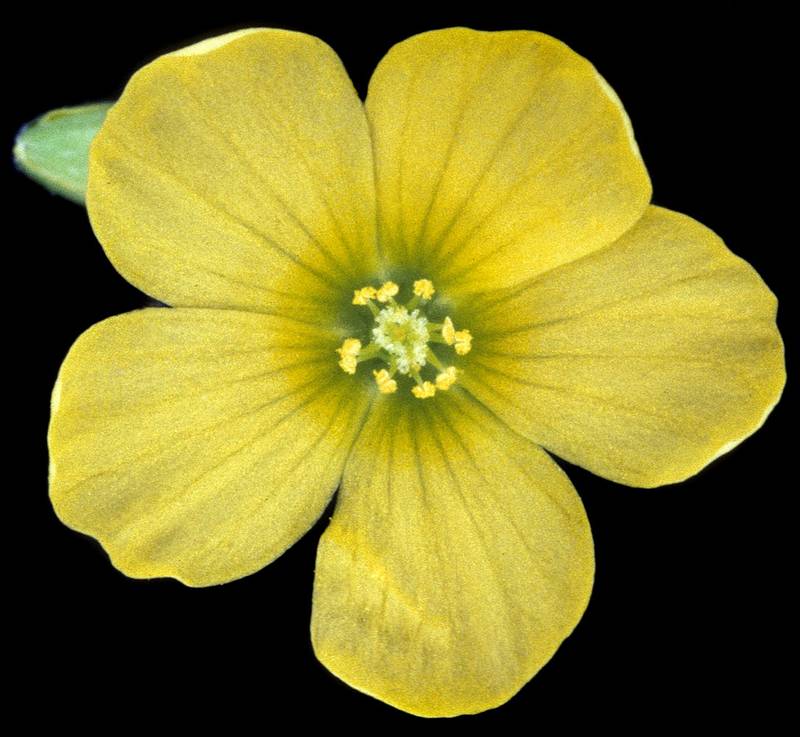Hosted by the University of Washington Herbarium, Burke Museum
Publication: Sp. Pl. 1: 435. 1753.
Origin: Introduced from Europe
Herbarium search: CPNWH
Notes: FNA12:"Oxalis corniculata in the flora area is recognized by a combination of its small flowers (petals yellow, 4–8 mm); sparsely hairy, herbaceous stems creeping and rooting at nodes; and stipules with free flanges and apical auricles. Peduncles and leaves (one to three) are produced at the nodes, short erect stems less commonly so. Specimens have been seen documenting its distribution in the United States as listed above; it may also occur in intervening areas. The typical form of Oxalis corniculata is strictly annual with consistently herbaceous, prostrate stems. At least some populations in western Oregon are distinctly more erect, with decumbent-ascending stems, than those of the eastern United States. In contrast, stems of O. dillenii characteristically are initially erect but may become decumbent to prostrate, occasionally rooting at the nodes; they almost always become more or less woody. Stems arising from nodes of laterally oriented stems characteristically are erect. In most of the United States, O. corniculata usually occurs in urban and highly disturbed habitats, but along the Gulf Coast it occasionally grows in less obviously disturbed sites and might be native there. However, assignment of nativity awaits a clearer understanding of patterns of variation within what is recognized as a highly variable species. Variants of Oxalis corniculata and closely similar forms occur in Mexico, the West Indies, Central America, and South America, as well as in other parts of the world, including the flora area. Plants with bronze-purple to maroon leaves and hairy capsules have been recognized as var. atropurpurea (for example, in Florida, D. B. Ward 2004; in California, L. Abrams and R. S. Ferris 1923–1960, vol. 3). Variety atropurpurea in Malaysia has features of a distinct species, differing from typical O. corniculata in karyotype as well as in floral and vegetative morphology and is isolated by post-pollination reproductive barriers (B. R. Nair and P. Kuriachan 2004). Australasian variants sometimes identified as O. corniculata recently have been treated at specific rank (for example, P. J. de Lange et al. 2005). In view of the significant variation in ploidy level reported for the species, formal recognition of these and probably still other segregates may be justified."
Last updated 2/4/2024 by David Giblin.

